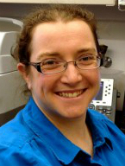Clinical outcomes, genomic heterogeneity, and therapeutic considerations across histologic subtypes of urothelial carcinoma Journal Article
| Authors: | Chu, C. E.; Chen, Z.; Whiting, K.; Ostrovnaya, I.; Lenis, A. T.; Clinton, T. N.; Rammal, R.; Ozcan, G. G.; Akbulut, D.; Basar, M.; Chen, J. F.; Chen, Y. B.; Gopalan, A.; Fine, S. W.; Tickoo, S. K.; Arcila, M.; Brannon, A. R.; Berger, M. F.; Cha, E. K.; Goh, A. C.; Donahue, T. F.; Bajorin, D. F.; Teo, M. Y.; Rosenberg, J. E.; Iyer, G.; Pietzak, E. J.; Bochner, B. H.; Reuter, V. E.; Sarungbam, J.; Solit, D. B.; Al-Ahmadie, H. |
| Article Title: | Clinical outcomes, genomic heterogeneity, and therapeutic considerations across histologic subtypes of urothelial carcinoma |
| Abstract: | Background and objective: Divergent differentiation and histologic subtypes are common findings in urothelial carcinoma (UC). Clinically relevant genomic alterations and oncogenic drivers of individual subtypes remain poorly defined. We characterized surgical outcomes and the genomic landscape of UC with aberrant histology (UCAH), with a focus on biomarkers and targetable alterations. Methods: The clinical cohort comprised 3052 patients who underwent radical cystectomy (RC) with or without neoadjuvant chemotherapy. Targeted exon sequencing was performed for a genomic cohort of 1060 bladder tumors from RC or transurethral resection specimens. We characterized the frequency of oncogenic mutations and targetable alterations, and the tumor mutational burden (TMB) of each subtype. We defined the clonal relatedness of morphologically distinct regions of tumors with mixed histology. Key findings and limitations: Patients with plasmacytoid, micropapillary, sarcomatoid, or mixed-histology tumors had worse cancer-specific survival than patients with pure urothelial histology. ERBB2, FGFR3, and PTEN alterations were most frequent in micropapillary, nested/squamous, and sarcomatoid UC, respectively. TMB was highest in plasmacytoid, neuroendocrine, and micropapillary tumors. Regions of mixed histology had shared clonal origins, but exceptions were observed. The retrospective design and potential for selection bias are limitations of our study. Conclusions and clinical implications: UCAH tumors have distinct patterns of genomic alterations, which may be targetable via novel therapies and have implications for clinical trial inclusion. Biomarker-driven systemic therapy should be explored in patients with histologic subtypes that are associated with worse clinical outcomes. © 2025 European Association of Urology |
| Keywords: | urothelial carcinoma; neoadjuvant chemotherapy; divergent differentiation; histologic subtype; next-generation sequencing; variant histology |
| Journal Title: | European Urology |
| ISSN: | 0302-2838 |
| Publisher: | Elsevier Science, Inc. |
| Publication status: | Online ahead of print |
| Date Published: | 2025-04-26 |
| Online Publication Date: | 2025-04-26 |
| Language: | English |
| DOI: | 10.1016/j.eururo.2025.04.008 |
| PROVIDER: | scopus |
| PMCID: | PMC12353162 |
| PUBMED: | 40288936 |
| DOI/URL: | |
| Notes: | Article -- MSK Cancer Center Support Grant (P30 CA008748) acknowledged in PubMed and PDF -- MSK corresponding author is Hikmat Al-Ahmadie -- Source: Scopus |
Altmetric
Citation Impact
BMJ Impact Analytics
MSK Authors
Related MSK Work






























